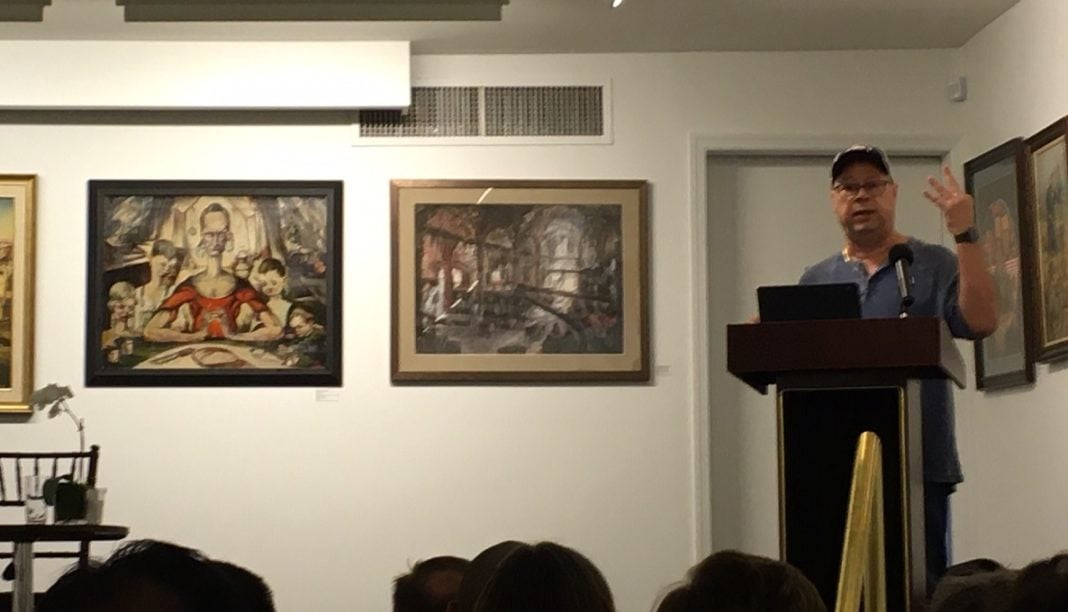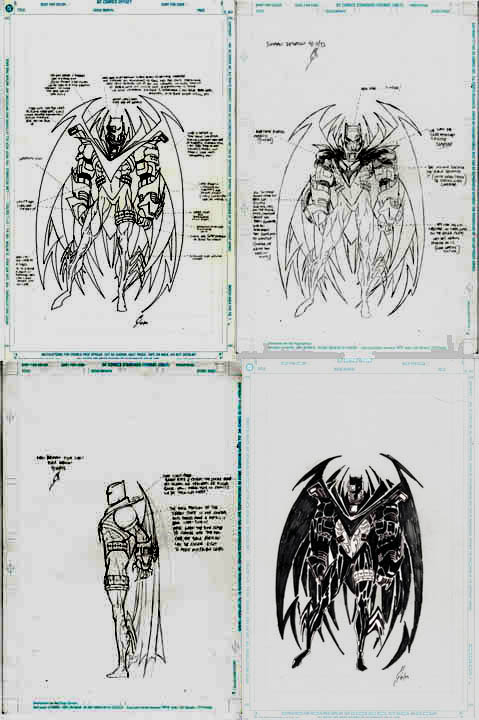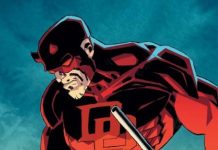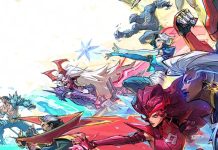For comic fans in NYC, the Society of Illustrators has displayed some amazing comic related exhibits. After its Batman showcase earlier this year celebrating the Dark Knight’s 80th Anniversary, SOI is closing out November with a “Marvel Art of Joe Quesada” featuring a one-of-a-kind selection of rare original Joe Quesada drawings assembled from the personal collection of the award-winning artist and Marvel Creative Director. Last Tuesday night, the Society hosted an interactive discussion with Quesada about his illustrators career.
The evening began with an introduction from current Marvel Editor-in-Chief C.B. Cebulski who revealed that he first took notice of Quesada’s work as a penciler and once he saw his art in the now famous issue of X-Factor #87 that featured the government team of mutants in a group therapy session, he devotedly followed his work. Though he’s worn many hats during his two decade tenure at Marvel, including a tenure as Editor-in-Chief, Cebulski said Quesada’s passion has always been for storytelling.
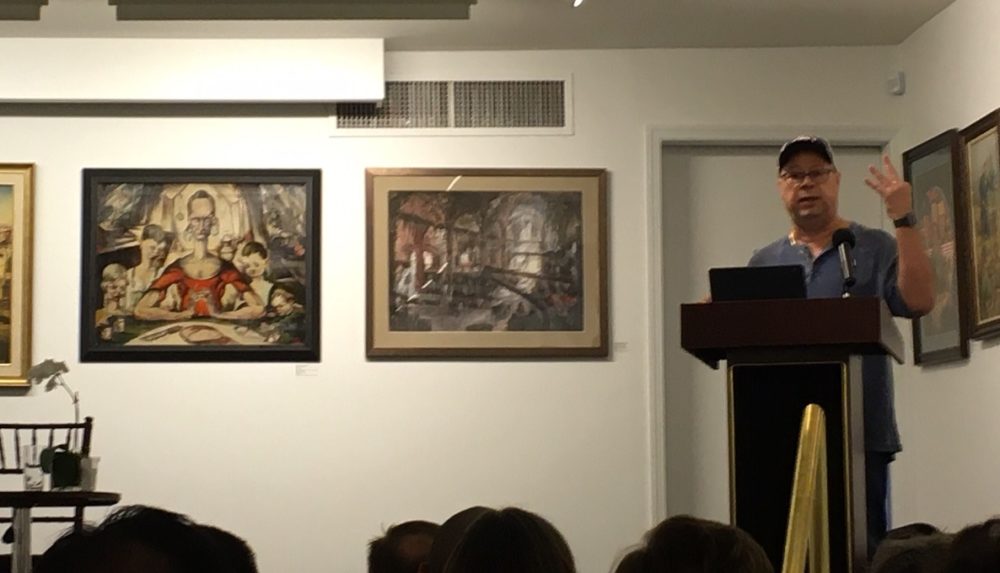
As Quesada has recounted often, he originally intended to become a commercial illustrator like Norman Rockwell, admiring his ability to tell stories in one image. He initially viewed comics as a “cultural ghetto” and was burnt out on art after graduating from the School of Visual Arts. That all changed in the ’80s when works like Watchmen and The Dark Knight Returns opened his eyes to the possibility of comics.
Reiterating Cebulski’s introduction that storytelling is his passion, Quesada said when people ask him what he does for a living, his answer is that he’s a member of the oldest profession—storylling.
It may surprise some to hear that Quesada admitted he wasn’t the best artist in college or even high school. Yet he learned important lessons through his mistakes. During the talk, Quesada imparted 3 major points of advice for anyone trying to break in:
1) Don’t Create in Fear
Artists face two major demons every day. The first is constantly being surrounded by the same 4 walls of a room, which can end up feeling like a prison. That pales in comparison to the demon of the blank page. Creating something out of nothing is a herculean task, exacerbated by modern day distractions. Quesada emphasized that the internet is the bane for creators and is not an accurate reflection of the real world. Without citing specific names, he noted that there are creators who despite having large social media followers aren’t able to sell their books to a wide audience. There have even been creators who have changed stories midway simply due to negative internet reaction rather than sticking to their guts.
2) Learn How to Fall
Quesada equated this lesson with his daughter, a professional figure skater since she was seven. She will fall 75% of the time and land on the ice in order to learn to correct way to hit a jump. In terms of comic creators, they may have the drive but they don’t learn the right lessons. Whenever they fail, there’s always something to be taken away as long as they “fall properly.”
3) Why?
Finally, Quesada stressed the importance of “why.” He quoted the following from author and motivational speaker Simon Sinek, “People don’t buy what you do, they buy why you do it.” Comic creators need to treat their name as brands and be able to get that point across through their work. Hopefully it will mean quality. For Quesada his “why” has changed since he started his comics career. He told the audience that years ago his family was featured on a television segment of Home and Garden when their kitchen was remodeled. When he watched it with his then 5-year old daughter, it elicited no reaction from her until she saw B-roll footage of her father drawing and referred to him as a “king of comics.” So now, Quesada’s “why” is for those few brief moments when he gets to be a king in his daughter’s eyes.
The remainder of the discussion was devoted to Q&A from the audience. The first person inquired about how to revitalize the comics industry with better sales. It’s a subject Quesada has encountered before and one he feels is under the false impression that the comics industry is dying, a belief he’s been hearing for the past thirty years. He joked if the comics industry was dying he’d pretty much have no other option than to become a mall cop. While there are always lulls and highs, both creatively and monetarily, Quesada views comics as a currently stable business with Marvel publishing 75-90 titles monthly.
The next audience member asked about the relationship between business side and the creatives of Marvel. Quesada pointed to a monumental shift when executive Alan Fine sat in during a creative summit with the various Marvel creators and suggested they hold more summits throughout the year.
A fan was interested in Quesada’s view on Marvel’s handling of diversity during and after his tenure as Editor-in-Chief. While both the Marvel and the comics industry as a whole can always do better, Quesada felt his commitment to diverse representation speaks for itself through greater number of both characters and creators themselves at Marvel. He does wish that there was a breakout Hispanic character during his tenure of Editor-in-Chief. I would point out to Anya Corazon/Araña, but I’d say her popularity came some time after her initial appearance.
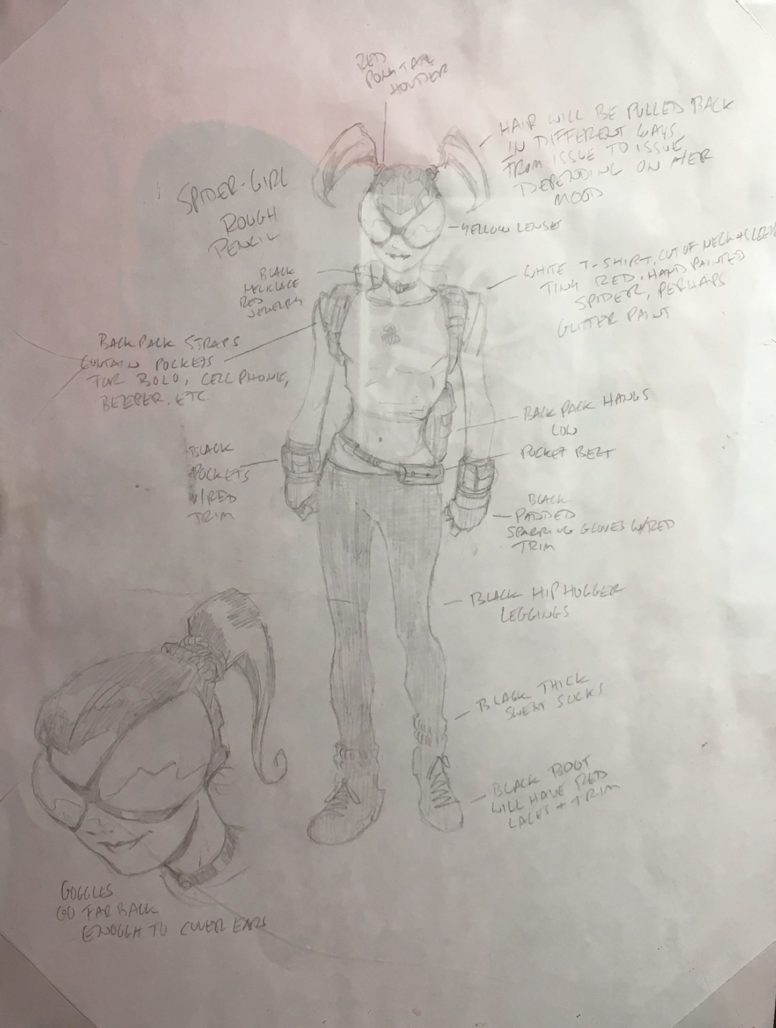
I’m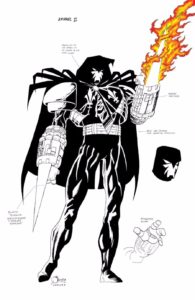
Next, someone brought up the trend of celebrities and TV/film writers working in the comics industry, a subject he’s familiar with having brought unabashed filmmaker geek Kevin Smith to work on various Marvel projects including their acclaimed Daredevil Marvel Knights “Guardian Devil” storyline. Quesada called Kevin Smith the heir apparent to Stan Lee and was an easy choice for him to work on Daredevil more than 2 decades ago. Quesada conceded there were early hurdles with Smith writing the first issue “Marvel Style” and Quesada penciling the issue based on a couple of paragraphs. Smith would then write the dialogue after the pencils were completed, and with Smith’s penchant for loquacity, Quesada described it as more dialogue than you had ever seen. Smith refused to let Quesada edit his dialogue so when Smith saw how much space the dialogue took up, he realized Quesada should have edited him. Thankfully by the third issue of Daredevil, Smith got the hang of writing for the comics medium and by the fifth issue he was perfect according to Quesada.
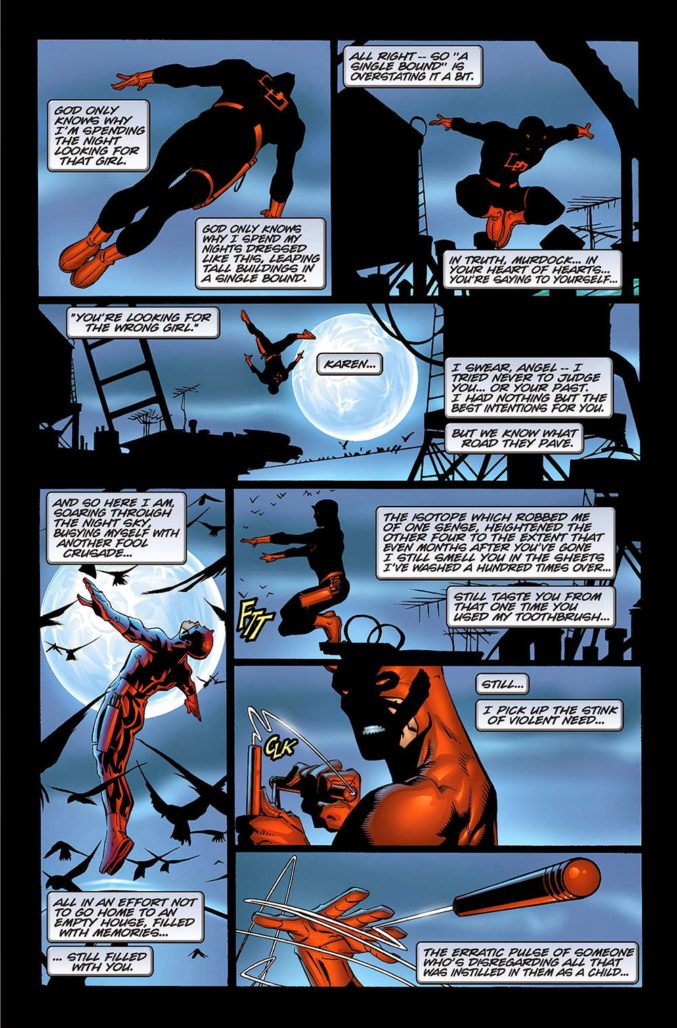
Asked about the inspiration for Marvel’s Ultimate line, Quesda pointed to former publisher Bill Jemas who at the time was responsible for plugging up the sinking ship that was Marvel both financially and creatively. Jemas conceived of retelling Marvel’s established characters as though they were created in the new millennium. Interestingly, the initial name for the line was Ground Zero comics. Thankfully, Brian Michael Bendis‘ wife Alisa Bendis remarked that having a zero in the name already had a negative connotation and was simply bad branding. You can probably guess this was before 9/11. When it came to implementing the Ultimate line, Jemas wasn’t able to find creators who were able to buy into it or have the right approach. When he asked Quesada for potential creators, he suggested Brian Michael Bendis whom he had hired to write Daredevil. Potentially considered as the writer for Ultimate X-Men, they realized Bendis’ talents were better suited for the Ultimate Spider-Man book. Quesada suggested Mark Millar for Ultimate X-Men who at the time was writing The Authority for WildStorm. Fearing that Millar’s trademark risqué writing would deter Jemas, Quesada was surprised that Jemas found The Authority a hoot to read and was completely on board with Millar.
Infamous for ending the Spider-Man/Mary Jane marriage in the controversial “One More Day” storyline, Quesada maintains that the sweet spot for Spidey has always been when the character is single and in school hence why adaptations be it animation, film, or television nearly always feature a high school Peter Parker.
Regarding regrets, Quesada admitted one of the biggest mistakes as a tyro creator was writing a heated letter to the Comics Buyer’s Guide airing his grievances with Valiant Comics over an unjust contract he signed. It resulted in him burning bridges with the publisher and feeling like complete garbage after the fact.
A young aspiring creator asked for advice on breaking into the comics industry. Compared to when he first attempted breaking in when he was 28, there are more avenues of getting your work out into the world and seen thanks to the internet. It may take time but if you love something do it. Originally a colorist, Quesada said he didn’t become a penciller until he was 30.
The news last month of Kevin Feige taking on the new role as Chief Creative Officer still has fans pondering the relationship between Marvel Studios and Marvel publishing. Quesada did concede that artists have been mimicking the feel and aesthetics of the Marvel Cinematic Universe films and has cautioned them against doing so. Marvel publishing still remains the “R&D” for Marvel Studios but if the comics ape the films excessively, then it becomes a serpent eating its own tail. In that regard it’s a double-edged sword, said Quesada, that provides good exposure for Marvel’s pantheon of characters to a wide audience, but in imitating the MCU the comics lose their identity.
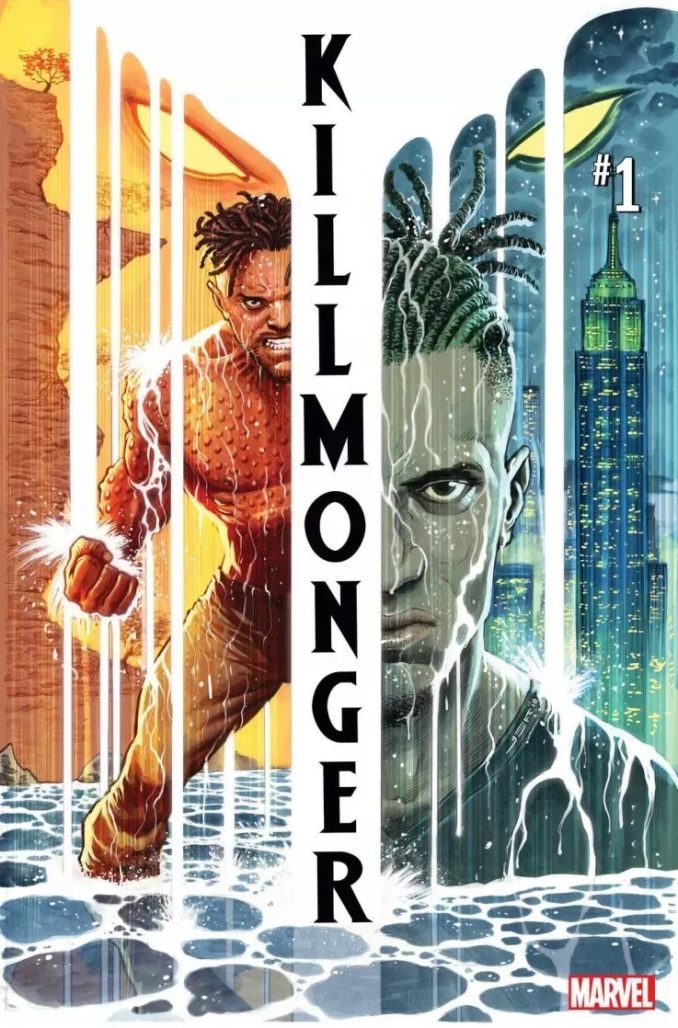
It’s too early for Quesada to comment on the restructuring, but believes the internet is making a bigger deal than it really is. Asked if he has any words of advice for Feige, Quesada is fairly confident that Feige doesn’t it.
Quesada recounted getting to meet and befriend British comic illustrator Barry Windsor-Smith, one of his personal favorite creators, during his days at Valiant. Sporting long hair and an ascot, Windsor-Smith epitomized a rock star icon. After offering to trade art pages if he ever saw something Quesada drew that he fancied, Windsor-Smith replied, “My dear Joseph, you shouldn’t be so presumptuous.”
Later when Quesada and his then Jimmy Palmiotti formed Event Comics and were getting ready to launch their first book Ash, Quesada asked Windsor-Smith if he could do a guest pin-up. To his delight, Windsor-Smith agreed, but more generously he refused to given the pin-up original art telling Quesada in the tradition of restaurants taping their first dollars to registers, this was his first dollar of more to come.
In wrapping up the discussion, Quesada was asked about his current goals. In his Editor-in-Chief days, he would have said the world domination of comics but it seems like that’s already been achieved. Quesada did reveal that he’s currently in the midst of producing his own 10-minute short film. It’s a personal project completely unrelated to Marvel and still a work in progress. Hopefully we won’t have to wait long to see the final product.


